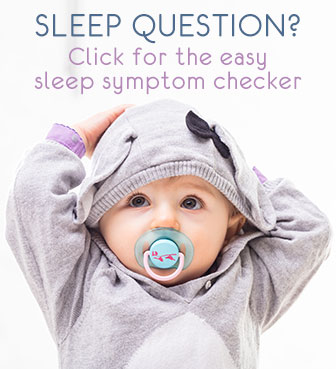Avoid disrupted sleep due to nightmares
Author Name: Heidi Holvoet, PhD
Dreams - Nightmares - Night Terrors
A nightmare is a scary dream that is so frightening it completely wakes up a sleeping child and leaves him/her scared afterwards.
They are quite common and usually harmless but by
recognizing the bad dream, reassuring your child and using a few
helpful techniques you can
avoid
most related sleep troubles
.
Although more usual in toddlers and bigger
kids, they can
occur as
baby sleep
disorders
from as early as 1 year old.
(Note
that a
night
terror
is quite different from a nightmare. A night terror
is not a dream but rather how a child feels and reacts after waking
from a deep sleep.)
How to recognize nightmares
When your baby or toddler has a nightmare, you will know: she will wake
up, be frightened and cry or scream. She will need your reassurance
before she can go back to sleep.
Usually they
occur
in the second part of the night, towards early morning
.
If your child wakes up screaming in the first part of the night, she
may be having
night
terrors
in stead - (or simply need a night feed ...
;)).
He/she will normally remember what happened, also the following morning.
Anxiety
is
a
common cause of nightmares
. That includes scary images or
experiences
during the day but also being afraid of the dark or of being alone or
going to bed alone.
How to help your baby
What you can do to prevent nightly troubles because of scary dreams :
- Make sure your baby sleeps in a safe environment that also reassures her . Install a night light. Leave the bedroom door open when possible and assure her you're always near during the night. Use a gentle and relaxed bedtime routine.
-
From when your child is very young, even
before having nightmares,
talk
about dreams from time to time
.
When you pick her up after sleeping, ask her if she's been dreaming, what she has seen while sleeping. I used to jokingly ask if they dreamed about me this time?
This is a really simple way to learn that it's completely normal, and good, to have dreams. Also tell her that all she sees is not real, rather that it is like a story on TV. This will help her understand scary dreams later on. -
Briefly
talk the dream through right after it happened
: let
your child tell you what she saw.
If she's too young to do that, you can do it for her: " You had a bad dream, right? I think you saw something you didn't like and it may have made you feel uneasy. That's why you woke up. I know it's not nice but luckily it was just a dream ... ".
No need to go into full detail, the main point now is to both acknowledge and reassure her. If something in her room scared her, now is a good time to check together: nothing under the bed, the cuddly toy is actually a nice soft one. - Bring her back to bed once reassured - or stay with her until she's reassured . Tell her you'll come back and check on her soon (and of course truly do so, whether she's already back asleep or not).
-
Before she goes to sleep again, help
her
get
rid of the scary thoughts
(which can still linger) by
provoking fun images.
Talk to her about something she likes and try to bring up those images in her mind. For example: Let me tell you about swimming dolphins. Dolphins are very good swimmers, can you see them, in the ocean? They swim and swim, and then jump high, and swim some more ...
This is a powerful way to get rid of the scary images and makes it easier to settle and drift off again, it works a bit like a simple meditation. - The next morning, talk about the dream again, this time in more detail. You can also have her make a drawing of what she saw if she likes.
-
Try
and identify what scared her
most. It will usually be an
imagined animal or scary person, but it can also be something or
someone real, or something that happened.
Through talking, or looking at the objects or images that scared your baby together during the day, you may be able to relieve some of the fear.
Dreams - Nightmares - Night Terrors

Baby waking every hour?
by Heidi Holvoet, PhD

A Bedtime Routine: Settling To Sleep Like A Charm
by Heidi Holvoet, PhD

Separation Anxiety
by Heidi Holvoet, PhD

Colic
by Heidi Holvoet, PhD

Why does my baby wake up every hour?
by Heidi Holvoet, PhD


